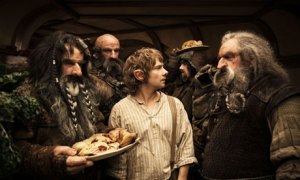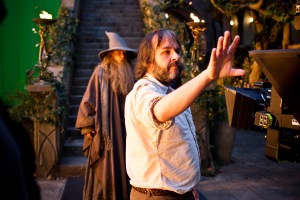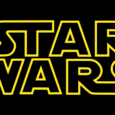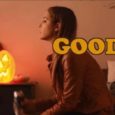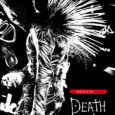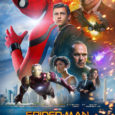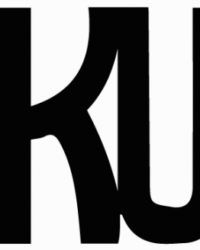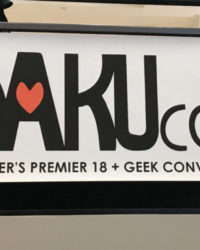We can’t deny that the Lord of the Rings trilogy left us all with the hope, however vague, that The Hobbit would make it’s way to the big screen. Most of that was dashed when a director failed to be set in stone, for how could anyone other than Peter Jackson do it justice?
Luckily the majority of us were pleased, so if you’d like, check out our thoughts below and let us know what you thought about this most recent journey into Middle Earth.
Ladyvader99
Just like the opening hums to “Far Over the Misty Mountains Cold”, The Hobbit: An Unexpected Journey resonated inside my very inner geek core. It was a book I’d read repeatedly as a kid so for me, this movie (as will it’s subsequent sequels) had a lot of expectations to live up to. While the added content slightly slowed the pacing of the movie down (as expected from the thinnest Middle Earth book stretched to three movies), it was something I enjoyed from beginning to end. Martin Freeman is perfection in playing timid-at-first reluctant hero, Bilbo Baggins and is matched only by Richard Armitage as the hardened Dwarf King, Thorin Oakenshield. Humor certainly wove its way into the story, from a riddle war to disgustingly grotesque goblins to the brown wizard Radagast himself. So, what can you expect from The Hobbit if you haven’t seen it yet?
If you’re a fan of the LoTR trilogy, you will be in love with the music, the effects, and the characters.
If you weren’t a fan of the LoTR trilogy, I can imagine this might be more of the same for you.
THIS is a fairytale for the ages.
THIS is the story we should be telling our children as they fall asleep dreaming of dragons, dwarven kings, goblins in the underbelly of the world, and of course…that good will triumph over evil.
SamIAm
“I have loved film for a long time, especially fantasy films. Labyrinth, The Dark Crystal, Willow, Conan the Barbarian, and many others filled my childhood and awakened my imagination. But none did more for my burgeoning desire to create than Lord of the Rings. I owned every one of the cartoons that were released and watched them obsessively; I would borrow the BBC radio play from the library every chance I got and spent hours listening to the story that would play out in my imagination. Even more important than The Lord of the Rings was a much smaller story: The Hobbit. The Hobbit taught me that whimsy and epic adventure could exist side by side. It awakened dreams of dragon hordes, and magnificent eagles. Of loyalty and loss, but most of all it taught me that even the smallest being could change the course of the world. That is what I wanted from the film The Hobbit, and that is what I got. It sent shivers down my spine when the dwarves sang of their lost home. I felt like I was 5 years old again, reading one chapter at a time with my mom, feeling the excitement of a new discovery on every page. While there are things that I can say about the pacing (drawn out in some places as Peter Jackson is apt to do), or the dialogue which had some inconsistencies which puzzled me; there is not one bone in my body that isn’t screaming, “I don’t care!” I’ve been waiting for this movie since I saw the poster for Fellowship of the Ring as a little kid. I’ve been waiting for this movie since I read the first line of The Hobbit with my mom. I’ve been waiting for a long time, and Peter Jackson gave it to me. Thank you Mr. Jackson, for understanding my passion and the passion of millions of others who first discovered that “In a hole in the ground there lived a Hobbit.” and never looked back. ”
Crabacca
“An Unexpected Journey, indeed. The Hobbit provided a much lighthearted look at the Tolkien universe; one filled with songs and dances, but also with some of the greatest fights scenes this decade. The film went above and beyond my personal expectations, leaving me wanting for more. Between the epic escape from the goblin hordes, to Thorin’s bad ass slow walk of badassdom, The Hobbit is a welcome edition to Peter Jackson’s look into Middle Earth. The film also excels at its 3D application, with only some minor discomfort adjusting to the high frame rate. This is definitely one film you do NOT want to miss.”
Jenisaur
“It’s no secret that I love the book upon which The Hobbit: An Unexpected Journey is based, and so I was very excited that there would FINALLY be a movie adaptation of the Lord of the Rings prequel. When it was announced there would be THREE movies, my excitement turned to apprehension. The apprehension transformed back into excitement as I watched the first of the trilogy in IMAX 3D on Thursday night. I can’t find much to complain about, except perhaps that I thought the trolls, goblins and orcs were all cut from the same aesthetic stylings and I wish there had been more variations in their designs. Martin Freeman makes a phenomenal Bilbo; the accidental hero time after time of the dwarven quest to reclaim the Lone Mountain. There wasn’t much of The Hobbit book in An Unexpected Journey, but that was okay, because the scenes and exposition that Jackson chose to add did what he promised they would do: they fleshed out the simple story to an epic history of Middle Earth, and while some people may think he’s overstaying his welcome, I’m busy cheering ‘Two more films! Two more films!’
P.S. Richard Armitage as Thorin Oakenshield is, simply put, spectacular.”
Koala
“I saw The Hobbit on Saturday in IMAX 3D at 48fps. Being a wanna-be film maker I spend a lot of time studying silly things like frame rate, exposure, depth of field, and a whole lot of film elements that people don’t normally care about. Well, when I heard The Hobbit was going to be made in 48 fps, against the industry standard, I pretty much flipped out in the best possible way. 24 fps (‘frames per second’ for the uninitiated) has been the industry standard since the 1930’s. Why? Was it because it pleases our eyes more? Does it give a ‘cinematic’ quality to a motion picture? Nope; 24 frames per second was chosen simply because it was ‘the slowest (and thus cheapest) speed which allowed for sufficient sound quality’ as Wikipedia’s article on the history of film will tell you (although it is fairly common knowledge among film makers, even fledglings like myself). So for the past eighty years we have been using 24 fps simply because it USED TO be cheap, but somewhere along the way we grew accustomed to this style. It’s even a comforting look to us now. For example, have you ever used a video camera and shot a graduation, party, or you and your friends, but couldn’t figure out why everything looked ‘unusual’? It’s because most video cameras are naturally set to 30 fps and thus your eyes are seeing more every second. 24 fps, being a ‘low’ frame rate, makes film look unusually choppy and action scenes in particular tend to have a lot of motion blur. In modern cinema though this is what we have come to accept as a desired look.
Peter Jackson basically said, ‘Fuck that! Let’s do something that makes sense’.
The proposed benefits of 48 fps were that it would add a large sense of clarity to every scene and would give the audience the feeling they were really part of the film, especially considering how liberally Peter Jackson uses sweeping vistas. The downside was that movie theaters don’t have 48 fps projectors so only some will upgrade, since it is untested as to whether audiences will take to it and if it is worth the investment.
So how did the results turn out? In my opinion it was a step by step process, with the first step being a large dose of, ‘What the fuckkkkkkkk’. The first ten minutes of the movie were hard to wrap my mind around the extra motion. Everything seemed “too real” and not in a good way. It was very clear that everything was fake, and it was hard to undo so many years of being conditioned to the slower speed.
The next step was unexpected. Once Gandalf appeared and began dialogue with Bilbo, the 48 fps started to make sense. It gave the interactions between characters a very ‘living’ feel to them and my eyes had begun to grow accustomed to the change.
By the time Balin appeared and began eating Bilbo out of house and home, its charm was undeniable. It felt as if I was watching a play from the front row, but with the added benefit of it being a film. This allowed for the warmth of a live show, but with the ability for instant scene changes. I was relatively pleased with the 48 fps, but understood it would be a large pill for many to swallow.
And then it happened. Bilbo attempted to free the ponies from the trolls and without spoiling the scene, I became a devout acolyte of 48 fps. The way the fps allows the CGI to flourish while interacting with live action is unprecedented. There is no proper comparison, in my opinion. It is how I hope all action films look in the future *knocks on wood*.
The rest of the film continued to sell me on the new tech while remaining charming. A few scenes scattered throughout the film rise above the simple charm though and become the previously mentioned powerhouse of an experience. The potential seems huge in the future if other movies utilize the tech properly.
I swore I wouldn’t blindly accept this new tech if it wasn’t good. I won’t accept it just for the sake of it being different. I wasn’t forced into any tough decision at all though. It’s merits were obvious to me and the packed theater around me.
Aside from about two minutes of footage that had a very ‘video game’ look to it, and the initial shock of the new style, I have nothing negative to say about it other than the fact that tickets cost a lot for all the added tech. I understand this and I’m sure the movie is exceptional without it, but I can’t encourage one to dish out the extra dough if you don’t have it. It lived up to it’s title of An Unexpected Journey.”


